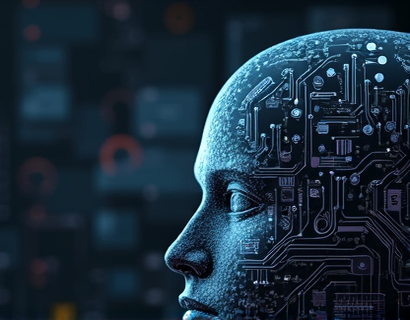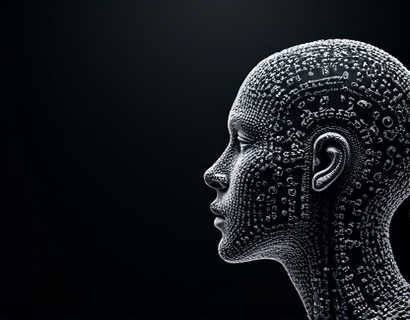AI-Powered Chat Interface: A Safe and Educational Resource for Accessing Specialized Social Services Information
In the digital age, accessing information has become more convenient than ever, thanks to advancements in artificial intelligence and chat technology. An AI-powered chat interface has emerged as a revolutionary tool, particularly for individuals seeking specialized information on social services. This platform is designed to deliver verified and educational content, ensuring a safe and informative experience for a diverse audience, including adults, students, and young learners. The primary goal is to simplify access to specialized social services information, empowering users to make informed decisions and engage effectively with essential resources.
The need for such a platform is evident in the complex and often overwhelming nature of social services. Whether it's navigating healthcare benefits, understanding legal rights, or finding educational support, the process can be daunting. Traditional methods of accessing this information, such as visiting government websites or contacting organizations directly, can be time-consuming and may not always provide the clarity needed. An AI-powered chat interface addresses these challenges by offering a user-friendly, instant, and accurate source of information.
The AI chat platform operates on a robust knowledge base that is continuously updated and verified by experts in the field of social services. This ensures that the information provided is not only current but also reliable. The chat interface uses natural language processing to understand user queries and provide relevant responses. This technology allows users to interact with the platform in a conversational manner, making the experience more approachable and less intimidating.
One of the key features of this AI-powered chat interface is its ability to cater to a wide range of users, from adults seeking detailed information to students and young learners who require simplified explanations. The platform is designed with a child-friendly version, ensuring that younger users can access the information safely and understandably. This multi-generational approach is crucial in a society where different age groups have varying levels of digital literacy and information needs.
The verification process of the content is a critical aspect of the platform's design. Each piece of information is cross-referenced with credible sources, including government databases, academic research, and reputable non-profit organizations. This multi-layered verification ensures that users receive accurate and trustworthy data. The platform also includes a feedback mechanism, allowing users to report any inaccuracies or outdated information, which helps maintain the high quality of the content.
For adults, the platform provides comprehensive information on a wide array of social services. This includes details on healthcare options, financial assistance programs, housing support, and legal aid. The chat interface can guide users through the application process, explain eligibility criteria, and provide contact information for relevant agencies. This level of detail is invaluable for individuals who may be unfamiliar with the bureaucratic processes involved in accessing these services.
Students and young learners benefit from a simplified version of the content, tailored to their educational level. The platform offers explanations of social services in a way that is easy to understand, using examples and analogies where appropriate. This not only helps in building knowledge but also fosters a better understanding of the importance of these services in society. The chat interface can answer questions about school counseling, youth programs, and community resources, empowering young users to take proactive steps in their personal and academic lives.
The AI chat interface also plays a significant role in promoting informed decision-making. By providing users with comprehensive and unbiased information, the platform enables them to evaluate their options carefully. For instance, when seeking healthcare services, users can compare different providers, understand coverage options, and make choices based on accurate data. This empowerment is particularly important for vulnerable populations who may otherwise struggle to navigate complex systems alone.
Engagement with essential resources is another key benefit of the platform. Users can discover a wide range of services that they might not have been aware of otherwise. The chat interface can suggest resources based on user queries, much like a personalized assistant. This feature is especially useful for individuals who may not know where to start or who feel overwhelmed by the availability of options. By guiding users to the most relevant and appropriate resources, the platform helps bridge the gap between need and support.
The design of the AI chat interface prioritizes user safety and privacy. All interactions are encrypted, and user data is handled in compliance with strict privacy regulations. The platform does not collect unnecessary personal information, ensuring that users can seek help without worrying about their data being misused. This commitment to privacy is essential in building trust and encouraging users to engage openly and honestly.
For educators and parents, the platform offers a valuable tool for supporting the learning and development of students. Teachers can recommend the chat interface to students as a reliable source of information for projects or personal inquiries. Parents can use it to understand the resources available to their children, ensuring they can provide the necessary support. The platform's educational content can also be integrated into school curricula, providing students with a practical way to learn about social services and civic responsibility.
The impact of an AI-powered chat interface extends beyond individual users to the broader community. By simplifying access to social services information, the platform helps reduce the burden on social service agencies. Users can obtain the information they need directly from the chat, reducing the number of calls and visits to physical offices. This efficiency not only saves time and resources but also ensures that agencies can focus on providing direct support to those in need.
Moreover, the platform's ability to handle a high volume of queries simultaneously makes it an invaluable resource during times of crisis or increased demand. For example, during a public health emergency, the chat interface can provide up-to-date information on available services, guidelines, and support options, helping to alleviate confusion and panic. This scalability ensures that the platform remains effective and accessible, even under pressure.
The development of such a platform also highlights the potential of AI in addressing social challenges. By leveraging advanced technologies, we can create solutions that are not only efficient but also inclusive. The chat interface breaks down barriers related to language, literacy, and access, making specialized information available to a wider audience. This democratization of information is a step towards a more equitable society where everyone has the opportunity to access the resources they need.
In conclusion, an AI-powered chat interface represents a significant advancement in how we access and interact with social services information. By providing verified, educational content in a user-friendly format, the platform empowers individuals to make informed decisions and engage meaningfully with essential resources. Whether for adults, students, or young learners, this tool offers a safe and informative experience that fosters independence and self-reliance. As technology continues to evolve, the potential for such platforms to transform social services delivery is immense, paving the way for a more informed and connected society.











































